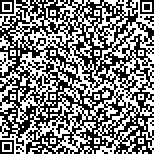Archive > Volume 45 Issue 5 > 2019,45(5):685-694. DOI:10.7519/j.issn.1000-0526.2019.05.010 Prev Next
Comparative Analysis of Several Drought Indices to Use in Fujian Province
- Article
- Figures
- Metrics
- Preview PDF
- Reference
- Related
- Cited by
- Materials
Abstract:
Using reasonable drought index to monitor drought has always been one of the difficulties in drought research. The study of the applicability of different indices can provide a certain reference for drought monitoring. Based on the daily meteorological observation data of the Fujian provincial meteorological stations during 1960-2017, we compare the applicability of the percentage of precipitation anomalies (Pa), the standardized precipitation index (SPI), standardized precipitation evapotranspiration index (SPEI), relative humidity index (MI) and improved comprehensive meteorological drought index (CInew) in Fujian Province with 120 typical historical drought events. Besides, we correct the thresholds of the five drought indices by using the frequency accumulation method and also calculate weights of drought events at different levels by Analytic Hierarchy Process. The results show that: CInew is suitable for the monitoring of the spring, autumn, winter and annual droughts and MI is suitable for the monitoring of the summer, autumn and winter droughts. The two indices have better monitoring effect on severe drought and specially severe drought events. SPI and SPEI are suitable for moderate drought and light drought events. All the five indices can describe the development process of drought events. CInew’s monitoring results are more close to reality and more consistent with the mechanism of drought. Therefore, CInew is more suitable for drought monitoring in Fujian Province, followed by MI.
Keywords:
Project Supported:
Clc Number:


Mobile website









